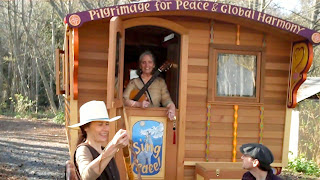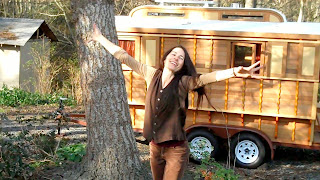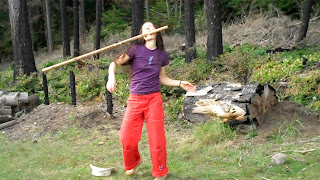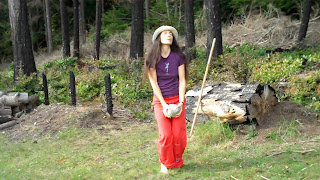Many native traditions held clowns and tricksters as essential to any contact with the sacred. People could not pray until they had laughed, because laughter opens and frees us from rigid preconception. Humans had to have tricksters within the most sacred ceremonies lest they forget the sacred comes through upset, reversal, surprise. The trickster in most native traditions is essential to creation, to birth.
Byrd Gibbens
I not only want to describe the imagination figured in the trickster myth, I want to argue a paradox that the myth asserts: that the origins, liveliness, and durability of cultures require that there be space for figures whose function is to uncover and disrupt the very things that cultures are based on.
Trickster Makes This World: How Disruptive Imagination Creates Culture
Lewis Hyde
Without the laugh, there is no Tao.
Lao-tzu
In 2006, former Vice President Al Gore gave us some compelling language with his landmark presentation, An Inconvenient Truth. As we all know, this was the centerpiece in his campaign to educate citizens about global climate change. The documentary was a critical and box-office success, winning an Academy Award for best documentary feature. It has had a powerful impact all around the world.
The central message in Inconvenient Truth was troubling enough in its own right, but becomes even more so when we realize that climate change is only one planetary-scale inconvenience looming over our heads. The expanded list is both grim and familiar: population growth, habitat destruction, species extinctions, water shortages, topsoil erosion, destruction of fisheries and rainforests, social injustice and expanding militarization. All are threatening and all are growing with each passing day. And so, given the long list of afflictions that we now face, the documentary of our times really needs to be called Inconvenient Truths.
activists and revolutionaries
Gore laid down the challenge, but it is up to us to take it to the next level. His title suggests a strategy and an attitude: in a world of inconvenient truths, what we need more than anything else are inconvenient people. Inconvenient people are those who are willing to step up and challenge the dominant cultural paradigm that supports ill health, environmental destruction and social injustice. Inconvenient people ask hard questions and tell hard truths. Inconvenient people are not content to receive their culture passively and without dissent. Inconvenient people speak, create and act.
There are several varieties of inconvenient people in our midst. The first are known as activists. These people set up non-profits, sign a board of directors, raise money and start a campaign. Much of their work consists of signing up volunteers to do research, lobby and persuade, and to raise more money. Activists may be inconvenient thorns in the side of established powers, but they are generally polite. They work hard, but their progress tends to be incremental. Over time, many activists become “grinders,” working immense number of hours, dedicated to the cause, fighting over detail, policy and procedure. Victories, when they come, are important, but rarely spectacular.
The activist’s work is honorable and must be done, but it’s also a sad fact that the activist’s labor is often ineffective. The power structure is stacked against change and non-profits are in a weak position to make things happen. Unfortunately, “dot org” is often synonymous with “weak, powerless and irrelevant.”
When activists and non-profits run out of steam, some of us become frustrated and call for a more active form of activism. We come to the conclusion that what we really need not activists but revolutionaries.
Revolutionaries are people who are willing to stand directly in the path of social injustice and environmental madness. They take on high levels of personal risk and challenge established hierarchies with direct language and in-your-face action. Revolutionaries are not patient people. In fact, they are extremely inconvenient.
Given the state of our predicament, this form of action is both appropriate and vital. Revolutionaries are essential; their work is often inspiring and meaningful. Nevertheless, there is danger here: by the time passions get to this level, revolutionaries sometimes cross the tipping point into extremist ideology, felony offenses and in a paradoxical turn, ineffectiveness. Being a strident, passionate and in-your-face revolutionary is great–when it works. But entrenched powers police their territories with great vigilance and are well-equipped to stamp out revolutionary ideas and revolutionaries themselves.
Revolution, especially in a paranoid, post-911 world, is an extremely high-risk proposition and the consequences of miscalculation are immense. Revolutionaries run the risk of hard time and in turn, the abrupt termination of their activism. You won’t be much good to anyone if you’re doing 10 to 20 in an orange jump suit. Suddenly, you’re no longer inconvenient; you’re just a statistic.
There is another option here, of course and that’s to make a distinction between overt and covert rebellion. The overt revolutionary challenges power directly: he chains himself to the bulldozer or sets up camp in trees that are slated for logging. He sinks whaling ships and pulls up survey stakes. He talks loudly and carries a big monkeywrench.
The covert rebel meanwhile, turns his efforts inward and makes a personal statement to the world at large. In this style, health itself becomes an act of rebellion. In a culture that drives people relentlessly towards mindless destruction of nearly everything, physical vitality included, personal health stands out as a glaring act of defiance. “I am an animal and I will not submit to a media-driven culture of passive consumerism. I am an animal and I will not waste my health in the service of environmental and social destruction. I am an animal and I will not lie down while we destroy the last living shreds of the biosphere.”
This approach adds an entirely new dimension to our study of healthy living. What is normally cast as a mainstream, harmless and thoroughly bland lifestyle practice now becomes a potently disruptive force. In this light, health has nothing to do with longevity, smooth skin and tight abs. Instead, it’s about living in protest and derailing the pathologies of a earth-hostile culture. In this context, health is no longer neutral or safe. Rather, it is a statement of rebellion.
tricksters
Of course, activists and revolutionaries are not the only players in our game of personal and planetary transformation. There are other ways that we might craft effective, inconvenient and meaningful lives. One of the most promising, I believe, lies in the path of the trickster.
The trickster has played a role in almost every culture; the archetype is almost certainly a human universal. He or she appears in thousands of stories with various roles: he scandalizes, disgusts, amuses, disrupts, chastises, and humiliates yet he is also a creative force transforming the world, sometimes in bizarre and outrageous ways, with his instinctive energies and cunning. In Native American culture, coyote plays the trickster and is known for his inventiveness, mischievousness, and evasiveness. He is a practical joker, always playing with meaning, assumptions, prejudices, roles, hierarchies and power relationships.
In our modern world, many of us would describe the trickster as a “cultural creative.” This is a person who refutes the standard narrative, pounded into our heads by our so-called “educational system,” that culture is a static thing, carved into stone by the ancients. She rejects the assumption that culture is a thing to be received and replicated, but not questioned and certainly not transformed.
Many people are content to simply accept and receive the culture that is handed to them. And so, they spend their lives in dutiful replication of cultural memes, photocopying the rituals of former generations onto their offspring. The trickster on the other hand, sees culture as a canvas, a lump of clay, a process to play with. Think of the raw material! So many memes to work with! Ideas, stories, song, books, movies, theatre, language: all ripe for recombination, revision and regeneration.
Fundamentally, the trickster is a questioner. She questions authority, expertise, power structures, culture and of course, herself. She question categories and assumptions about what is possible. She questions the status quo and business as usual. She won’t sit still when told that something is impossible or that transformation “just isn’t realistic.” Instead, she is always ready with the question “Why?” and “Why not?”
Above all, the trickster is an athletic multi-disciplinarian who refuses to get bogged down into any one camp, box or pigeon hole. Her identity is fluid and her interests dynamic. Never one to get trapped in a single point of view or a single field of inquiry, the trickster always has one foot…somewhere else. Both a bridge-builder and a destroyer of bridges, her philosophy is dynamic and holistic. She pulls us out of our entrenched, boring, specializations and gives us a glimpse of a world of connection and relationship.
Tricksters do their work on several scales, from the audacious to the microscopic. You might see them hanging banners on large buildings or painting a “crack” on the face of the Glen Canyon Dam. You might hear about them dressing up as trees and animals at corporate shareholder meetings. You might read about them bidding up the action at government timber-sale auctions, buying up land to protect it. And you might see their subvertising in print and on billboards: corporate memes visually altered to reveal alternative meanings.
This is all honorable work; it is highly visible trickery in action. But small-scale trickery is vital as well. A good trickster is an opportunist who looks for any chance to transform a dead meme or attitude into something more life-promoting. A conversational trickster can transform a simple phrase and bring new meaning to mundane moments of life; these “tricks” may be invisible to almost everyone, but their power can be immense.
In philosophy and action, the trickster strikes a delicate balance of gravity and levity. She has no illusions about the severity of today’s challenges, but refuses to be crushed under their weight. She is not naïve; she understands the state of the biosphere and the challenge to the future. But she also knows the danger of self-absorption and chronic seriousness. Yes, the situation is dire. Yes, the dangers are immense. And yes, the amount of suffering in this world staggers the imagination.
But none of this stands as reason for abandoning our exuberance or our vitality. On the contrary, it stands as reason for redoubling our enthusiasms, our humor and our levity. Our exuberance is the source of our creativity and in turn, our effectiveness. When faced with immense and compelling challenge, we need more of this joyful living, not less. And so the trickster keeps a balance: the greater the gravity, the more she dances, laughs and plays. The more she feeds her body and spirit with joy, the more she can bring to the predicament at hand.
And so we begin to see the immense and surprising power in trickery. Even if it “fails” in the grand scope of activism and planetary-scale transformation, it still succeeds in giving life to the trickster herself and those around her. Even if completely ineffective on one level, it can still succeed on another. If all trickery does is to maintain the outrageous health and exuberance of the trickster, then that may be enough. And, one never knows how far the ripples of trickery might extend. One good trick tends to inspire more of the same.
look at this!
Ultimately, tricksters are visionaries and senseis. They have journeyed the land of the ordinary and quested to the distant horizon. They have traveled far and thus they see ahead. And because they see ahead, they are in a position to direct and shape our attention. They bear witness to the dangers and challenges of our time. They draw attention away from the familiar, the conventional and the habitual. They show us alternatives. They point to human vitality. They point to the human bond with habitat, the land, the animals and the earth. They point to joy and love.
If you can see the way, become a trickster.
If you can’t, seek out a wise trickster and look where she’s pointing. Follow the trick and you’ll find the path.































